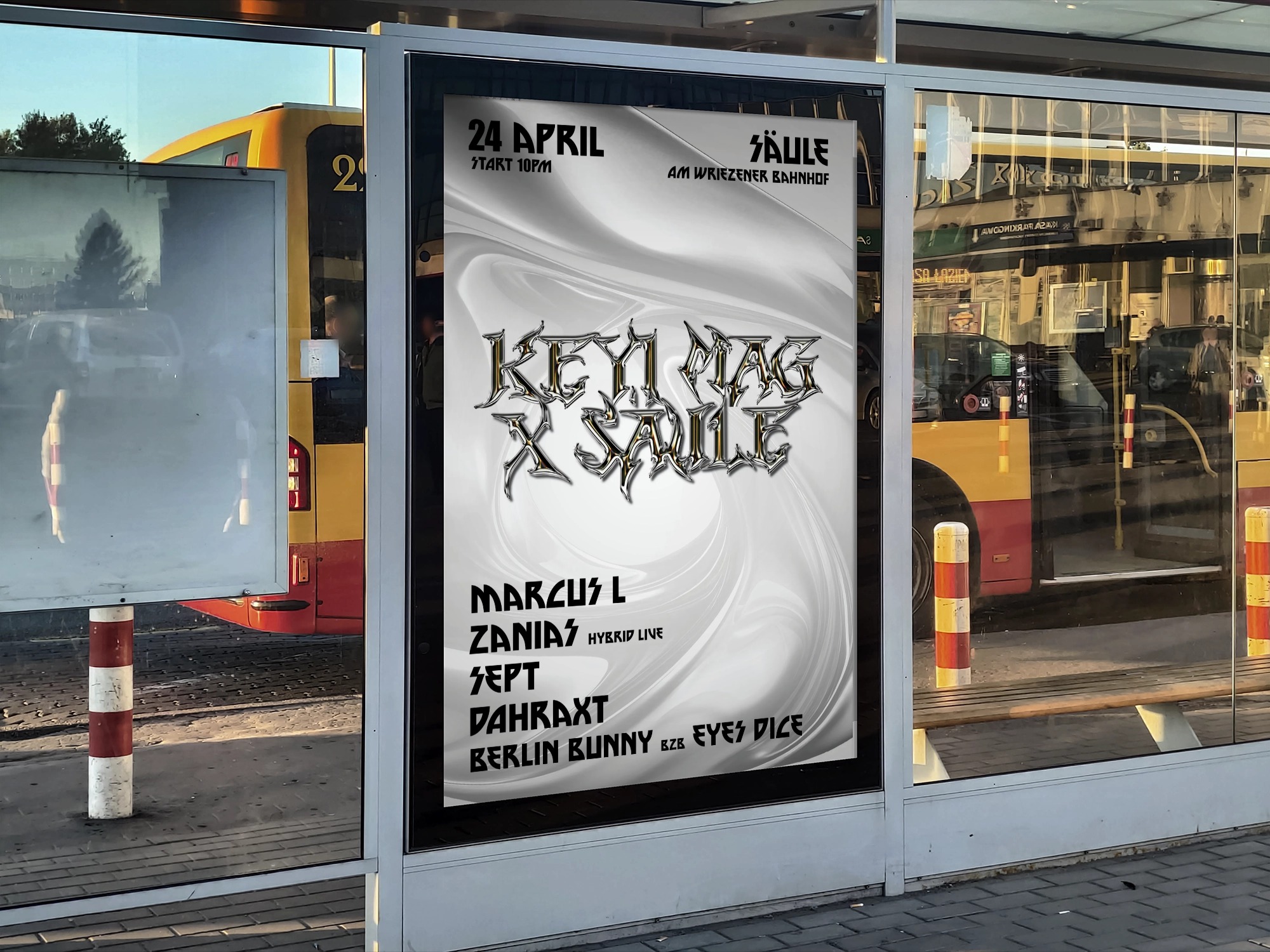Meet artist Mia Gosset, as she shares the inspirations behind her enchanting creations that have captured the attention of the fashion and art worlds.
The Paris-based artist works with metal to create stunning jewelry and tchotchkes, and has recently garnered attention for her pieces worn by Rick Owens and Lady Gaga. Gosset’s avante-garde, fantastical style is captivating, and in this insightful conversation, the artist welcomes us into her creative world.

How did you begin working with metal?
I studied clothing at Duperré, but I didn’t see myself working in fashion. I worked a lot with sculptural clothing and had already begun to explore metal carcasses to structure my garments.
One day, I met someone who put some tools and wax in my hands; it was a shock for me. I felt like I had finally found my medium; it was a true revelation from the very first day I came into contact with the material and the production process, and since then, I haven’t stopped. In fact, the first pieces I made were very artisanal. I produced wax models that I molded myself with Marius in the kitchen, then we put our mold with a hole in the oven so that the wax would flow out, leaving only our negative, and we melted old tin objects found in Emmaüs in a pot to pour the material into the still hot molds.
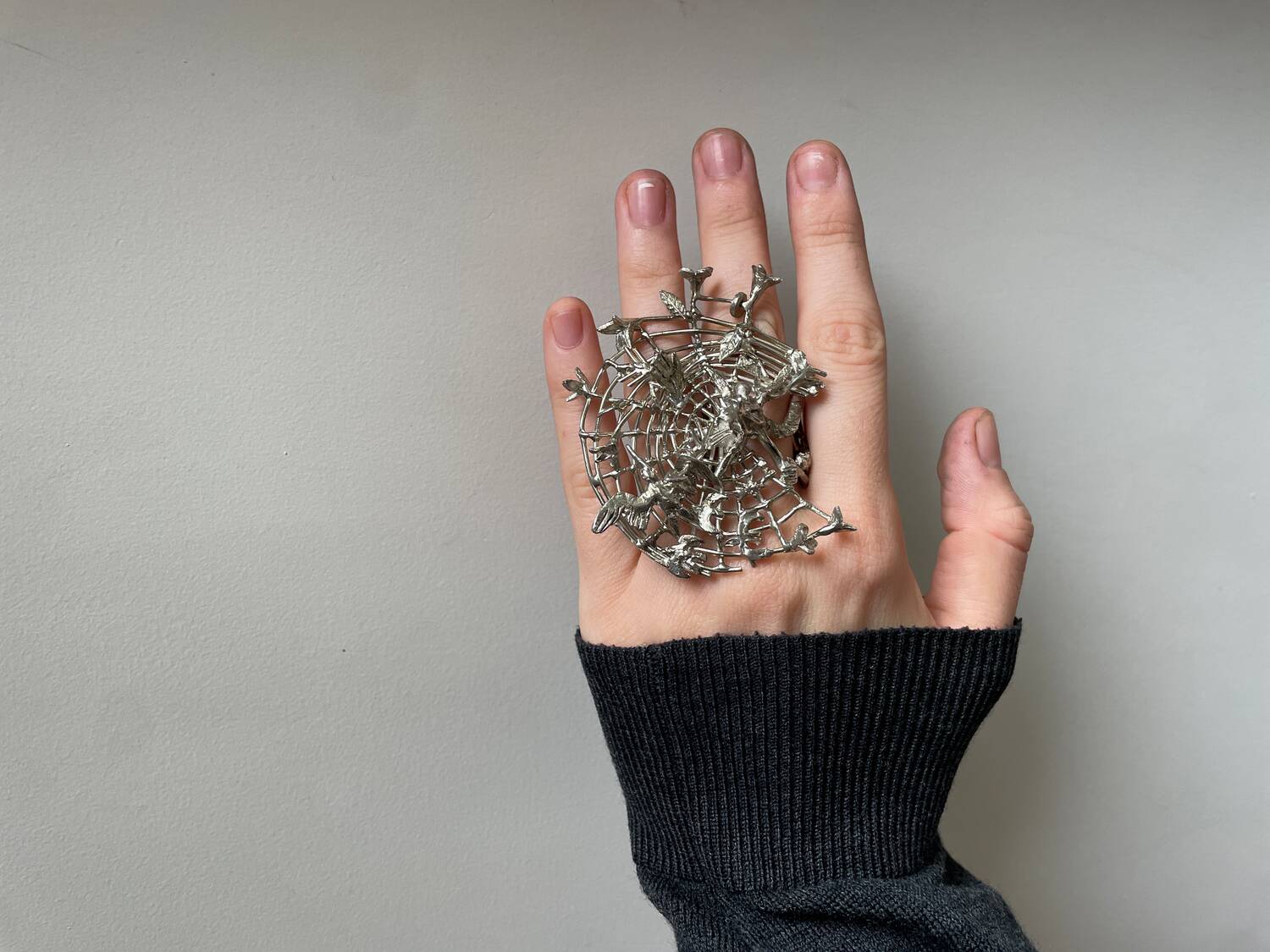
I think it was important for me to start by mastering the entire process; it made me fall in love with the practice. There is something magical about foundry work. Especially in a kitchen in the depths of Ivry-sur-Seine with my then-boyfriend and those tin carafes that suddenly became characters I had sculpted.
Metal seems like a material that is very hard to control and perfect. What is it about working with metal that calls to you?
Do you have a favorite kind of metal or mix of metals that you like to work with?
I believe that the pleasure I take in working with metal comes primarily from having learned on my own and continuing to find solutions independently. I struggle with studies and constraints, and taking this path towards this practice is surely synonymous with freedom for me. No one tells me how or what to do; every decision and desire to test new techniques is thus emancipating.
As for working directly with the material, I enjoy all the stages: the assembly by welding, which requires mastering the heat distribution of the pieces according to the dimensions and weight of the material; the polishing that gradually leads you to your final piece and gives it life in a certain way through the finish.
I can’t explain it; it’s as much physical as it is mental. There is something that becomes one when you work with metal.
I work a lot with bronze and brass; I like the idea that it can create a kind of convergence between my objects and the field of sculpture, but I particularly love silver. There is a softness in silver that makes it tender to work with—hammering, welding, or polishing—and then there’s that gray that always patinas perfectly over time, the angles that wear down from friction. There is a duality in the fragility and permanence of silver that I adore.


Much of your work has a raw quality– things aren’t meant to look perfectly polished. Your work is organically symmetrical, but not perfectly measured. However, your piece “Ferrer les Centaurs” shines, without imperfection.
How has your artistic style evolved to become what it is now, and how do you decide when a piece is finished?
If the metal horse stands out so much in terms of finish, it’s because it’s a completely different technique from my jewelry. It took me a year to make this horse; I wanted to work on the concept of a mount and had a particular attachment to this animal, along with my attraction to the medieval era, which resulted in this armor. I first made the body out of wood, then I patterned the entire armor, and I then shaped sheets of tin; this is what we call cold forging. It was the first time I worked with metal in another way, and I didn’t really have the equipment for it. For example, for the pieces of the neck, I shaped them on my thighs. Ultimately, for this horse, I had a hammer, a drill, shears, and my body.
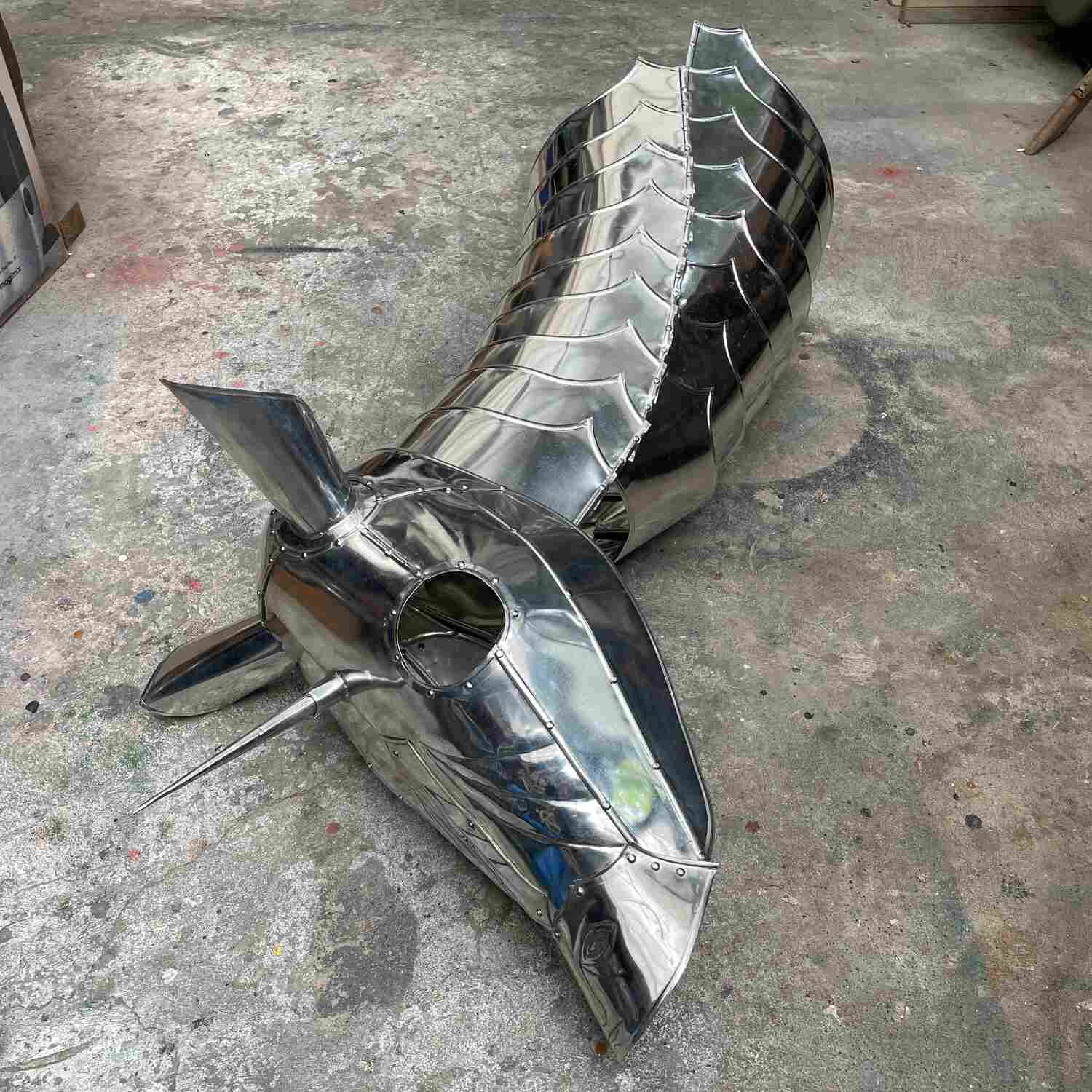

I loved working with sheet metal, which allowed me to access another type of scale represented by furniture, as the horse is also a piece of furniture. When you open its side, you find storage in the wooden body’s skeleton.
Your work has a magical quality that feels influenced by folklore or antiquity. Where does your inspiration come from? Are your pieces directly inspired by stories or concepts, or are there other underlying, more personal elements to each piece?
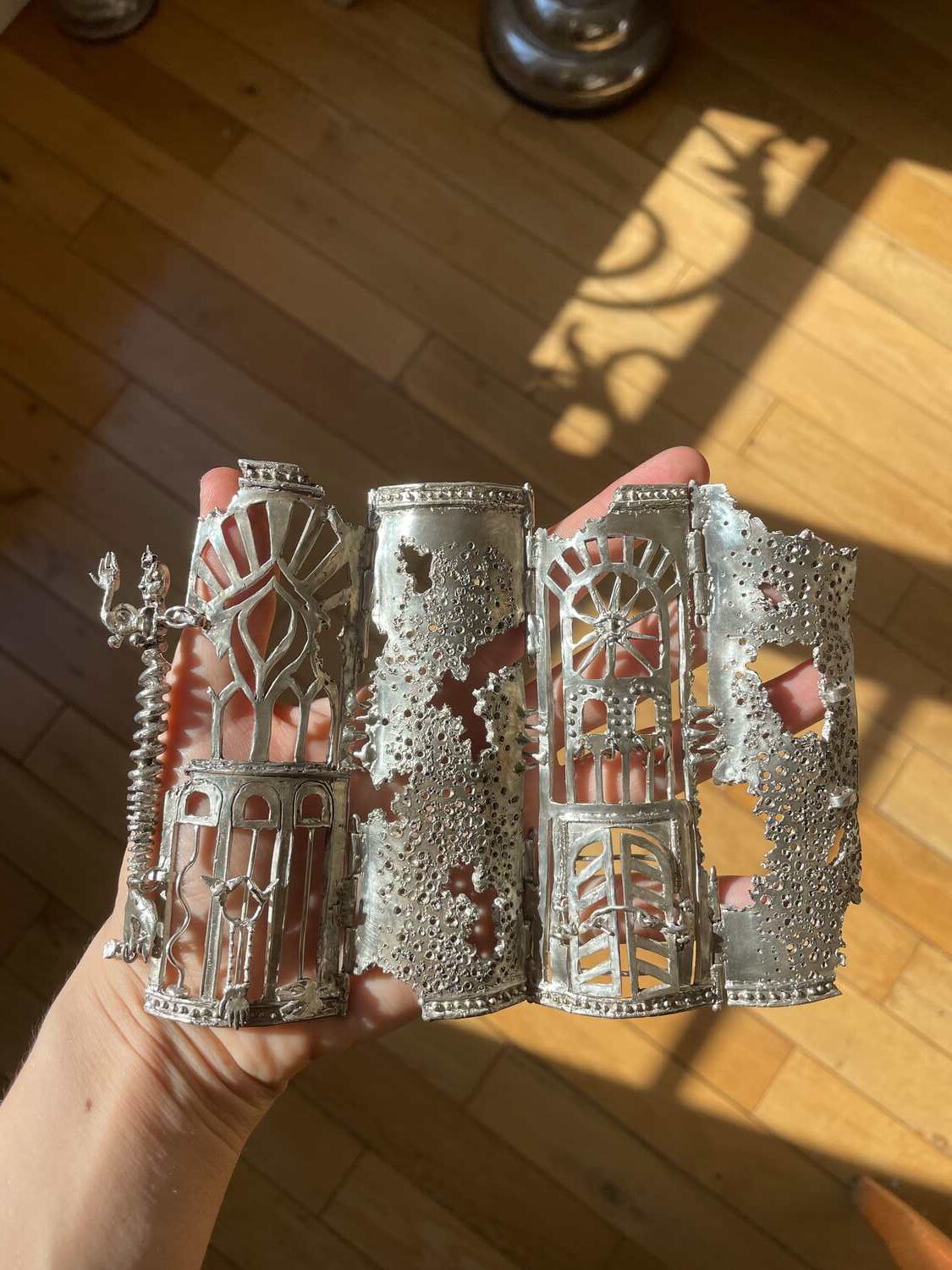

My inspirations are multiple, but a large part comes from my adolescence. I come from Brussels and lived next to one of the largest flea markets in Europe, which took place in Waterloo in the parking lot of a hypermarket. Every weekend, for years, my father would wake me up at 6:30 in the morning and take me treasure hunting for several hours. We would walk through the aisles without walking side by side, then we would meet to share what we had spotted, and he would send me to negotiate. Thanks to my age, I was able to lower prices more easily. We discovered this together; it bonded us. Objects became our means of communication and our language of love, where there were hardly any words before. I have seen so many things; it educated me, taught me to see, and also made me sensitive to craftsmanship.

Today, when people come to my house, some have difficulty distinguishing what is found and what I produced. I like that it’s blurry, and that ultimately my objects are relics by anticipation. My pieces also tell the stories of others; when I make a custom piece for someone, it’s often based on their own inspirations, stories, and symbols. I hardly have any pieces at home because most are made to order.
I like the idea that one day my pieces could be acquired as I was able to buy all my objects, that they become pieces one treasures, collects, and feels a sense of loss for having missed the opportunity to acquire, because that’s also what collecting is about—
accepting the loss of a part of oneself that one found in an object and that will never be ours, due to lack of means or timing.
Recently, your work has been worn by Rick Owens and Lady Gaga– two iconic characters in fashion and art. What was your process in designing for these two artists?
In which other settings– runways, theater, music videos, daily life, etc– do you hope to see your art?
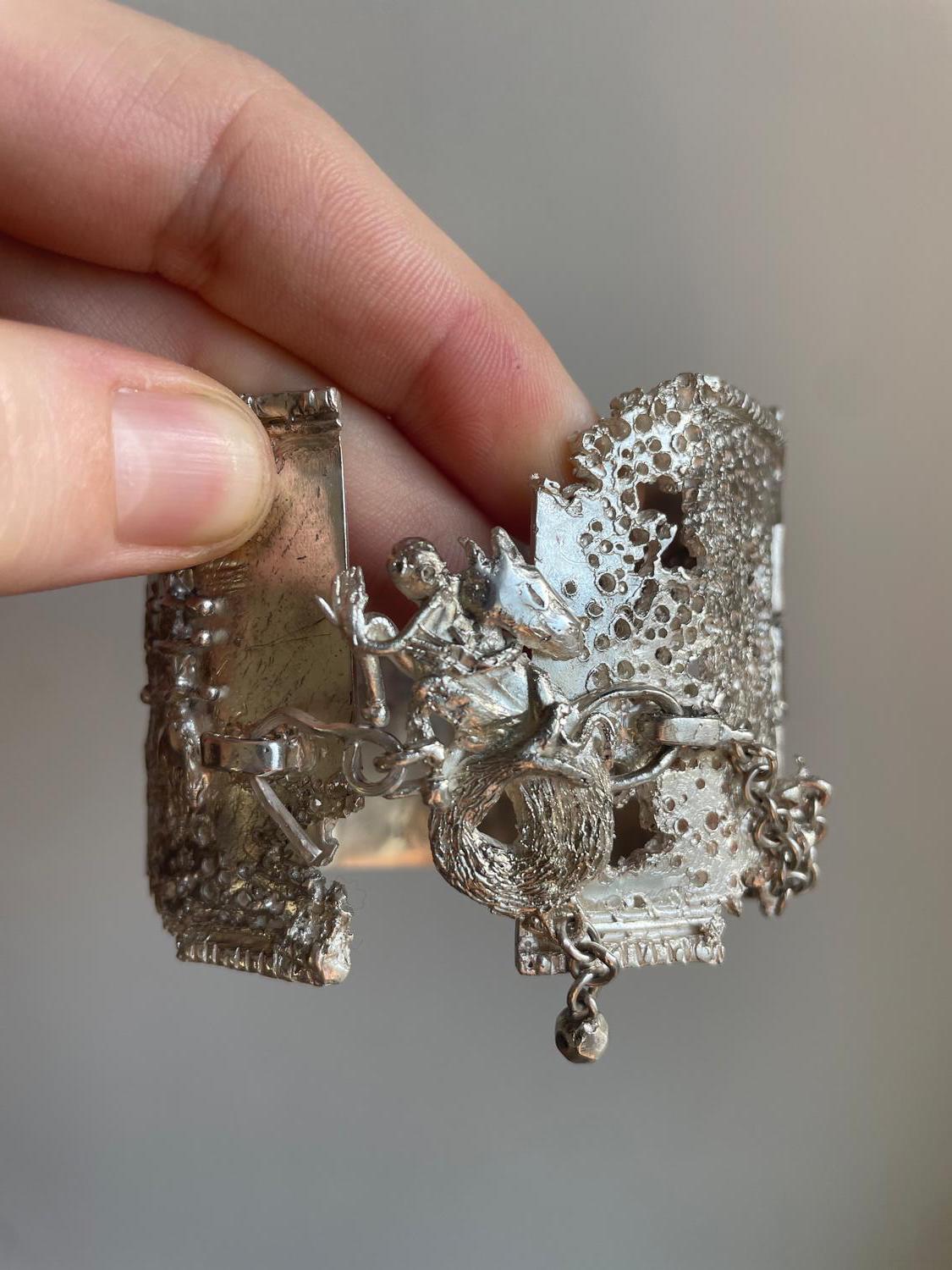

The ring for Rick Owens was a commission via my best friend Matisse DiMAGGIO. She ordered a ring for Rick, and I had complete creative freedom. Rick had just given three notions: asphalt, fog, and the sea. I just had to blend Rick’s universe with mine to compose this piece of jewelry.
For Lady Gaga, it was through a stylist loan who needed to put something on her for her ABRACADABRA music video, but the cuff bothered her while dancing, so they had her wear it during an interview.
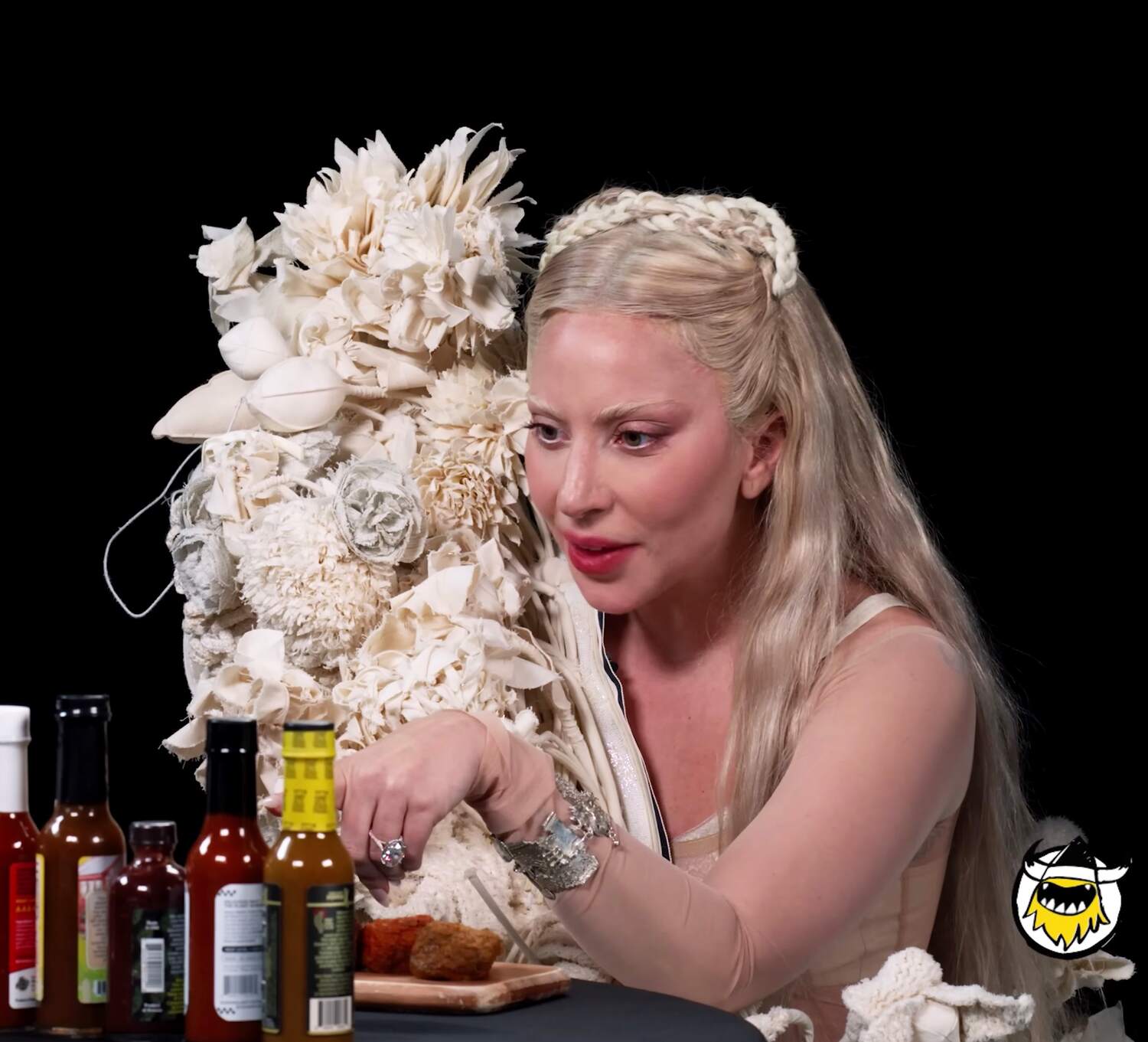
I believe that I don’t close any doors; I would love to work with different fields like fashion, but also design and interior decoration, and cinema for pieces that are a bit more visual, even if it seems a bit more complicated unless it’s a film like “The Color of Pomegranates” by Sergei Parajanov, a major reference in my work.
Your art indicates that you create with both utility and aesthetics in mind– notebooks, pencil holders, decor, cigarette holders, cuffs, etc.
How do you approach this intersection of art and utility? Do you look first for beauty, or first for utility?
I think that aesthetics almost always comes before utility or practicality. I first think of the piece as having an aesthetic impact and telling a story, then I see how to make it functional or wearable. My objects are often not very practical, even the jewelry; they are pieces that require special attention when worn, due to their weight, dimensions, noise, or the elements that move.
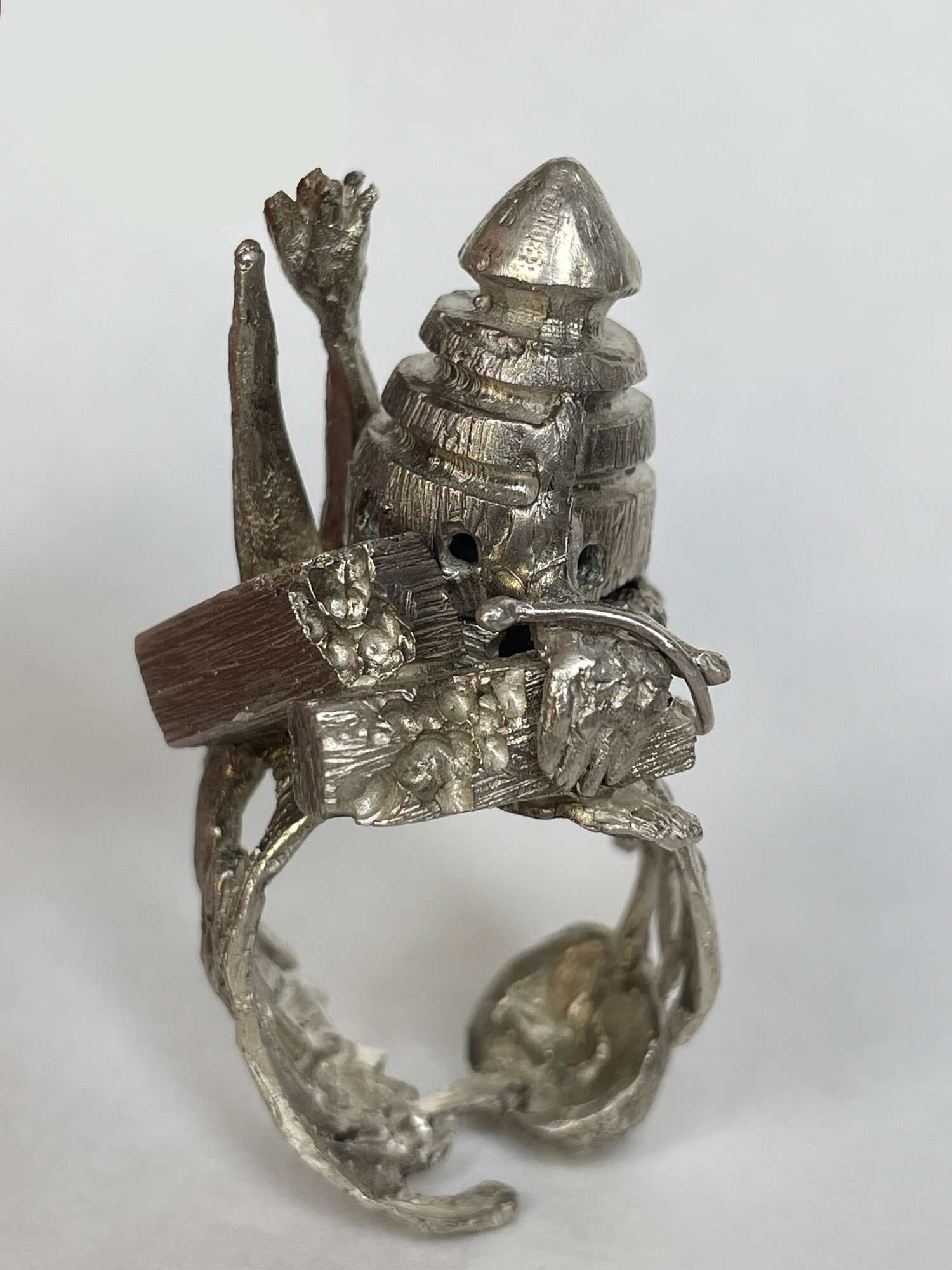
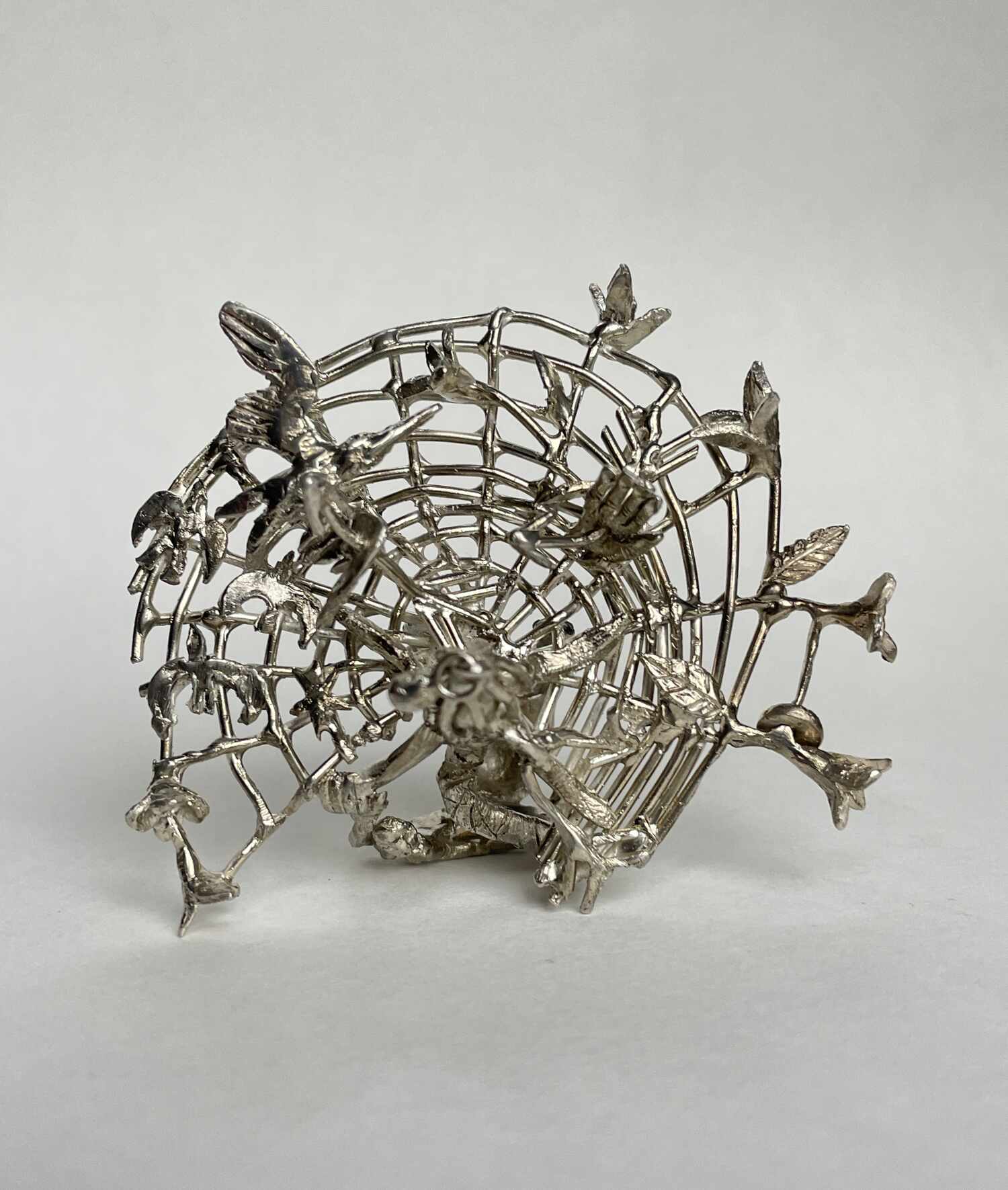
I believe there is often the issue of a crossover with sculpture; these functional objects or jewelry stand alone, and once placed, outside of their function, they become sculpture and ornamentation of the space with which they are associated.

What are your long term hopes for your career? Do you see yourself moving to other materials and art forms over time?
I am very eager to continue learning and to be in constant motion. I am currently learning to set stones; I would like to work with wood, stone, continue working with sheet metal, but above all, continue to explore different typologies and scales of objects, whether jewelry, objects, or furniture, so that everything responds to each other and produces a complete environment.
I hope to continue producing unique pieces or small series because there is something incredibly stimulating about never making the same thing and constantly reinventing and completing my production as well as my know-how. I also envision working with others to combine practices because I am well aware that I cannot learn or master everything, and I am surrounded by people with whom I want to produce and collaborate.
Keep up with Mia Gosset’s work here.
Gosset’s work available for purchase here.
Interview & article by Kate Wallner
More fashion content -> Click here
Our next event : Säule, Berghain – 24.04.2025 -> more info here
